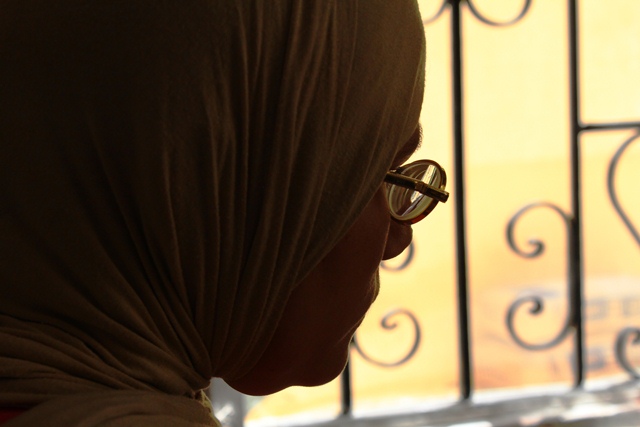Helping homeless mothers rebuild their lives
When 17-year-old Engy* had a falling out with her parents, her life took a turn for the worse.
“When I was younger I lived with my family. I was in love with a person who I loved so much and wanted to marry,” Engy explains. “But my family didn’t want me to marry him. They wanted to select an older person with more money.
“They told me if I didn’t obey them, then I needed to leave the house. I went to Alexandria when I left and I lived on the streets for two years.”
Just before she gave birth to her son Nasim*, Engy was helped by a Save the Children-supported shelter for young homeless mothers and street children.
Farid*, the shelter’s manager, says young mothers like Engy face many challenges living on the street and often struggle to survive.
“There are a lot of reasons the girls are on the street - because of poverty, illiteracy, socio-economic status. Sometimes the children have been abused,” he says. “On the streets they can receive wounds and life-threatening injuries. They can also face rape and other forms of abuse, and drugs.
“For the first two or three weeks when a girl first arrives at the shelter, she attends sessions with the psychologist and they start to help the girls.
“Through the psychological sessions, they can express themselves emotionally and say what’s inside them. They often prefer to talk to women because of what’s happened to them.”
Engy has greatly benefited from the psychological sessions provided at the shelter.
“A psychologist comes and talks to us about how to deal with people and how to deal with difficult situations, and also how to avoid anyone who abuses us,” she says.
“I attend the psychological sessions and I talk about what makes me feel frightened and I learn how to deal with the situation when I feel frightened. And this makes me relax. It helps me to take care of myself and to avoid any person I don’t know or trust from the street.”
The shelter also provides vocational training in carpet making, cooking, sewing and hairdressing. Once the girls are skilled in a new area, they start doing paid work. This helps the girls to start saving money and means they can support themselves when they leave the shelter.
“It helps them to work because then they feel like they’ve achieved something for themselves and they’re doing something useful, and they earn money from the work which means they can buy what they want,” Farid says. “It also supports them to learn vocational skills so they have something to do after they leave this place. It also helps them to reintegrate with their family, if that’s what they want to do.”
Although Engy is not ready to leave the shelter just yet, she is planning for her future.
“I feel it’s safe at the shelter. It’s safer than the street and that they protect me. I think this is a good place to live in,” she says.
“My hope for the future is that I put Nasim in school where he can get an education. And when he finishes he goes to university and will be well educated, and that I take care of him.
“I want to educate him because I didn’t have the chance to be educated. And also so he can know more people and how to deal with them. And to get a good career in the future.”
Save the Children is supporting street children, homeless mothers and at-risk children in Egypt. We are providing microloans and training for vulnerable families so they can support their children; we are providing accommodation, psychological support and vocational training for street children and young homeless mothers; and we’re working at national and local levels to strengthen child protection systems.
Save the Children’s project aims to reach 3,000 street children and at-risk children, 200 young homeless mothers and 1,600 families of at-risk children. We partner with Hope Village Society to provide microfinance and training to vulnerable families and a full-spectrum rehabilitation program through shelters to help street children and young homeless mothers with education and livelihoods opportunities so they succeed when they leave the shelter.
The project is funded by the Italian Egyptian Debt for Development Swap program.
*Names changed to protect identity.
 Egypt
Egypt 